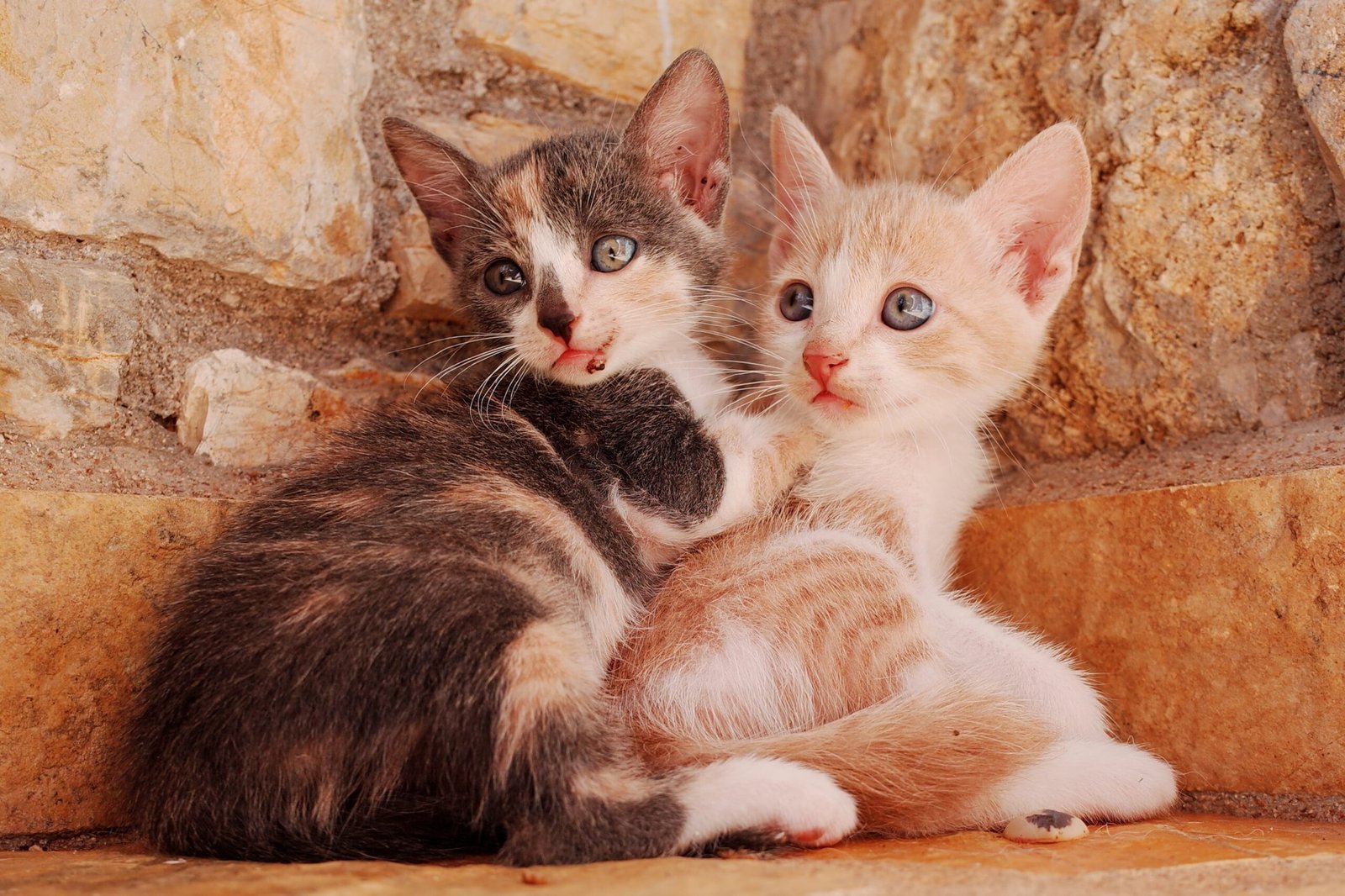Cats are known for their fastidious nature when it comes to personal hygiene. One of the most common behaviors observed in cats is their frequent visits to the litter box. As a concerned cat owner, it can be puzzling and worrisome when you notice your feline friend repeatedly going to the litter box but not actually eliminating anything. In this article, we will explore the possible reasons behind this peculiar behavior and provide you with some insights on how to address it.
Medical Issues
Before jumping to conclusions, it is crucial to rule out any potential medical issues that may be causing your cat’s behavior. Several underlying health conditions could be responsible for the frequent litter box visits without any urination or defecation. Some common medical causes include:
- Urinary Tract Infection (UTI): Cats suffering from UTIs may experience pain or discomfort while urinating, leading to frequent visits to the litter box. However, due to the inflammation, they might not be able to produce a substantial amount of urine. It’s important to note that UTIs can affect both male and female cats, but they are more commonly seen in females.
- Symptoms of a UTI may include straining to urinate, blood in the urine, frequent licking of the genitals, and urinating outside the litter box.
- UTIs can be diagnosed through a physical examination, urine analysis, and possibly a urine culture.
- Treatment typically involves antibiotics prescribed by a veterinarian to clear the infection. It’s important to follow the prescribed treatment plan and complete the full course of medication.
- Bladder Stones or Crystals: The presence of bladder stones or crystals can cause similar symptoms as a UTI. These obstructions can make it difficult for cats to pass urine, resulting in repeated trips to the litter box.
- Some common signs of bladder stones or crystals include frequent urination, straining to urinate, blood in the urine, and discomfort while urinating.
- A veterinarian can diagnose bladder stones or crystals through a physical examination, urinalysis, and possibly imaging tests such as X-rays or ultrasounds.
- Treatment options may include dietary changes to dissolve the stones or, in more severe cases, surgical removal.
- Kidney Disease: Cats with kidney disease may have increased thirst and subsequently visit the litter box frequently. However, their urine output may be reduced due to the compromised function of their kidneys.
- Symptoms of kidney disease in cats can vary but may include increased thirst, decreased appetite, weight loss, and changes in urination habits.
- A veterinarian can diagnose kidney disease through blood tests, urine tests, and possibly imaging tests such as ultrasounds.
- Treatment for kidney disease may involve dietary changes, medication, and supportive care to manage symptoms and slow down the progression of the disease.
- Constipation: If your cat is constipated, they may strain and make repeated attempts to defecate without success. This can lead to frequent litter box visits without any actual bowel movements.
- Signs of constipation in cats may include straining in the litter box, small or hard feces, and decreased appetite.
- Treatment for constipation may involve dietary changes, increased water intake, and in severe cases, medication or enemas prescribed by a veterinarian.
If you suspect that your cat’s behavior is related to a medical issue, it is crucial to consult a veterinarian for a thorough examination and appropriate treatment. They can provide a proper diagnosis and recommend the best course of action to address the underlying health problem.
Behavioral Reasons
Apart from medical issues, there are several behavioral factors that could contribute to your cat’s frequent visits to the litter box. Understanding these reasons can help you address the issue effectively. Some potential behavioral causes include:
- Litter Box Preference: Cats are particular about their litter box preferences. If the litter box is dirty, smells unpleasant, or does not meet your cat’s preferences regarding location, size, or type of litter, they may repeatedly visit it without eliminating anything. Ensure that the litter box is clean, easily accessible, and filled with a litter that suits your cat’s preferences.
- Cats generally prefer unscented litter, so avoid using heavily scented products that may be off-putting to them.
- The litter box should be large enough for your cat to comfortably move around and dig in.
- Experiment with different types of litter (clumping, non-clumping, silica gel, etc.) to find the one that your cat prefers.
- Stress or Anxiety: Cats are sensitive creatures, and stress or anxiety can greatly impact their behavior. Changes in the household, such as the introduction of a new pet, moving to a new home, or a shift in the daily routine, can trigger stress in cats. This stress may manifest as frequent visits to the litter box without any actual elimination.
- Provide your cat with a quiet and safe space where they can retreat and feel secure.
- Consider using pheromone diffusers or sprays, such as Feliway, to help create a calming environment.
- Gradually introduce any changes in the household to minimize stress and give your cat time to adjust.
- Territorial Marking: Cats use urine and feces as a means of marking their territory. If your cat feels threatened or insecure, they may visit the litter box to mark their territory repeatedly. This behavior is more common in unneutered or unspayed cats, but it can occur in any cat.
- Neutering or spaying your cat can help reduce territorial marking behavior.
- Ensure that there are enough resources (food, water, litter boxes) available for each cat in a multi-cat household to minimize competition and potential stress.
- Clean any soiled areas thoroughly to remove the scent and discourage further marking.
- Litter Box Aversion: Cats can develop an aversion to their litter box due to negative experiences associated with it. For instance, if your cat experienced pain while eliminating due to a medical condition in the past, they might associate the litter box with discomfort, leading to avoidance or repeated visits without elimination.
- Gradually reintroduce your cat to the litter box by providing positive experiences. Start by placing treats near the litter box and gradually move them closer over time.
- Consider using a different type of litter or litter box to see if your cat prefers a specific option.
- If your cat continues to avoid the litter box, consult with a veterinarian or a certified cat behaviorist for further guidance.
Addressing the Issue
Once you have ruled out any potential medical problems and considered the behavioral factors, you can take several steps to address your cat’s frequent visits to the litter box without elimination. Here are some helpful tips:
- Consult Your Veterinarian: If you suspect a medical issue, it is vital to consult your veterinarian for a proper diagnosis and treatment. They can conduct necessary tests and prescribe appropriate medications or therapies to address any underlying health problems. Follow their advice closely to ensure your cat’s well-being.
- Maintain a Clean Litter Box: Ensure that your cat’s litter box is clean, scooped regularly, and contains an adequate amount of litter. Cats prefer clean and odor-free litter boxes, so maintaining cleanliness can encourage proper litter box usage.
- Scoop the litter box at least once a day and replace the litter completely on a regular basis.
- Avoid using harsh chemicals or strong-smelling cleaners near the litter box, as these may deter your cat from using it.
- Provide Multiple Litter Boxes: If you have multiple cats, it is essential to provide each cat with their own litter box. Additionally, it is recommended to have at least one more litter box than the number of cats in the household. This helps prevent litter box competition and provides ample options for your cats.
- Place the litter boxes in different areas of the house to give each cat privacy and avoid congestion.
- Monitor your cats’ litter box usage to ensure that each cat is using their designated box appropriately.
- Reduce Stressors: Identify and minimize any potential stressors in your cat’s environment. Provide a calm and secure space for your cat, create a consistent routine, and consider using Feliway or other calming products to alleviate anxiety.
- Introduce changes gradually, whether it’s a new pet, a new household member, or a change in routine.
- Ensure that your cat has access to hiding spots or elevated perches to help them feel safe and secure.
- Positive Reinforcement: Reward your cat with treats or praise when they use the litter box appropriately. Positive reinforcement can help create a positive association with the litter box and encourage proper elimination habits.
- Whenever you see your cat using the litter box, provide verbal praise and a small treat as a reward.
- Avoid punishing or scolding your cat for accidents outside the litter box, as this can create further anxiety or aversion.
- Litter Box Placement: Ensure that the litter box is placed in a quiet, easily accessible location. Avoid placing it near loud appliances, high-traffic areas, or in areas where your cat may feel cornered or trapped.
- Choose a location that allows your cat to have privacy while using the litter box.
- If you have multiple floors in your home, consider having a litter box on each level for convenience.
- Consult a Cat Behaviorist: If the problem persists or if you are unsure about the underlying cause of your cat’s behavior, consulting a certified cat behaviorist can be beneficial. They can provide expert guidance tailored to your cat’s specific needs.
- A behaviorist can assess your cat’s behavior, environment, and interactions to provide a comprehensive plan to address the litter box issue.
- They may recommend additional techniques or modifications to help resolve the problem effectively.
Remember, every cat is unique, and their litter box preferences and behaviors may vary. Patience, understanding, and consistent effort are key to successfully addressing and resolving any litter box issues your cat may have. By addressing both medical and behavioral factors, you can help your cat maintain proper litter box habits and ensure their overall well-being.











